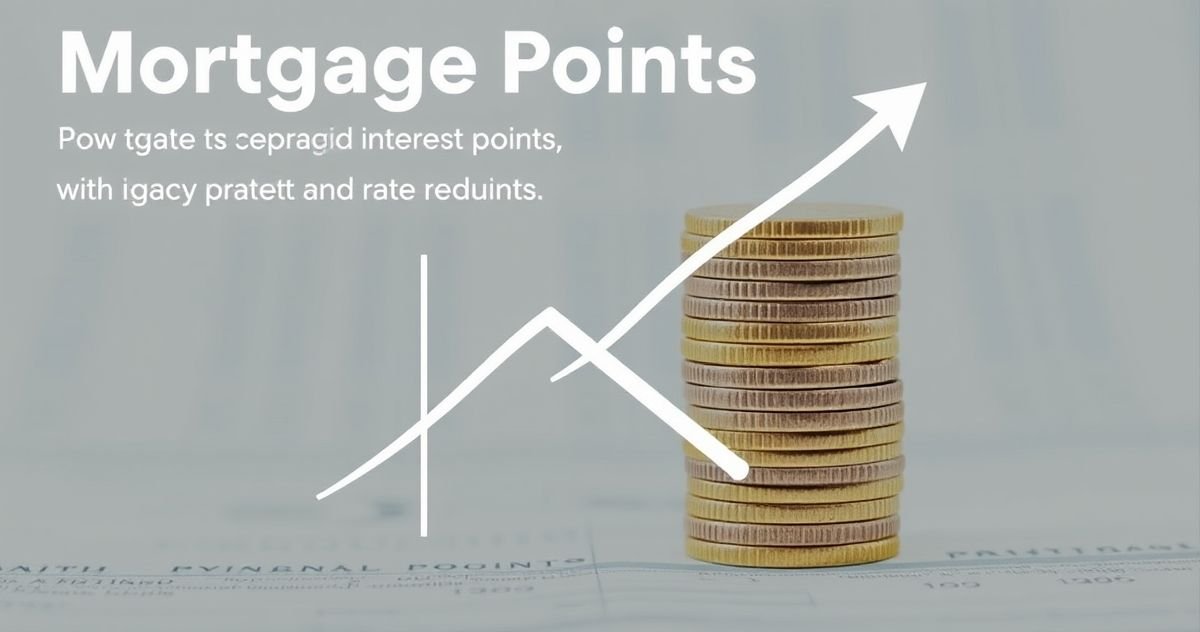Mortgage Points: Lower Your Interest Rate, Boost Your Upfront Costs
Mortgage points are a smart way to potentially lower your interest rate over the life of your loan, but they come with a higher upfront cost.
What Are Mortgage Points?
Do you want to pay less interest on your mortgage? You might consider buying “points.” Mortgage points, also known as discount points, are fees paid directly to the lender at closing in exchange for a reduction in the interest rate.
Definition
Mortgage points are essentially prepaid interest. Each point typically costs 1% of the loan amount and can reduce your interest rate by a fraction of a percent. For example, paying $2,000 for one point on a $200,000 mortgage could lower your interest rate by 0.25%.
Background/History
The concept of paying upfront for a lower interest rate has been around for a long time in various forms of lending. In the mortgage industry, points became a common way for lenders to offer borrowers options to manage their monthly payments and long-term interest costs.
How It Works
When you apply for a mortgage, the lender will present you with an interest rate and loan terms. Often, you’ll have the option to pay points to “buy down” the interest rate.
- Cost: One point generally costs 1% of the total loan amount. If you borrow $300,000, one point would cost you $3,000.
- Benefit: Each point you buy typically lowers your interest rate by a predetermined amount, often around 0.25%. This can vary by lender and market conditions.
- Break-Even Point: You need to calculate how long you plan to stay in the home and keep the mortgage. If you stay long enough, the savings from the lower monthly payments should outweigh the upfront cost of the points.
Real-World Example
Let’s say you’re taking out a $250,000 mortgage for 30 years.
- Option 1 (No Points): The interest rate is 7.0%. Your estimated monthly payment (principal and interest) is about $1,663.
- Option 2 (Buy 2 Points): You pay $5,000 upfront ($250,000 x 2%). The interest rate is reduced to 6.5%. Your estimated monthly payment drops to about $1,580.
In this scenario, you save $83 per month ($1,663 – $1,580). To recoup the $5,000 you paid for the points, it would take about 60 months ($5,000 / $83 per month), or 5 years. If you plan to sell your home or refinance before 5 years, buying points might not be financially beneficial.
Who It Affects
Mortgage points primarily affect:
- Homebuyers: Those purchasing a new home who have the extra cash for upfront fees.
- Homeowners Refinancing: Individuals looking to lower their interest rate on an existing mortgage.
- Long-Term Homeowners: Borrowers who plan to stay in their home for many years will benefit most from the long-term interest savings.
Tips or Strategies
- Calculate Your Break-Even Point: Always figure out how long it will take for the monthly savings to cover the cost of the points. If you plan to move or refinance sooner than that, it’s likely not worth it.
- Compare Lender Offers: Different lenders may offer different rate reductions for the same number of points, or they may have different costs per point. Shop around!
- Consider Your Financial Situation: Only buy points if you have the extra cash available after covering other closing costs and maintaining an emergency fund.
- Understand Tax Deductibility: In many cases, the points you pay on a mortgage for your primary residence are tax-deductible in the year you pay them. However, tax laws can change, so it’s wise to consult with a tax professional. The IRS has specific rules about when points are deductible. Generally, points are deductible if they are paid to obtain a loan to buy or improve your main home, the points are customary for the area, and the amount paid isn’t excessive.
Common Misconceptions
- “Points always save me money”: This isn’t true if you don’t stay in the loan long enough to benefit from the reduced interest payments.
- “All points cost the same and offer the same reduction”: The cost per point and the interest rate reduction can vary significantly between lenders and loan products.
Sources:
- What Are Discount Points? – Consumer Financial Protection Bureau
- Discount Points – Investopedia
- Mortgage Points Explained – NerdWallet
